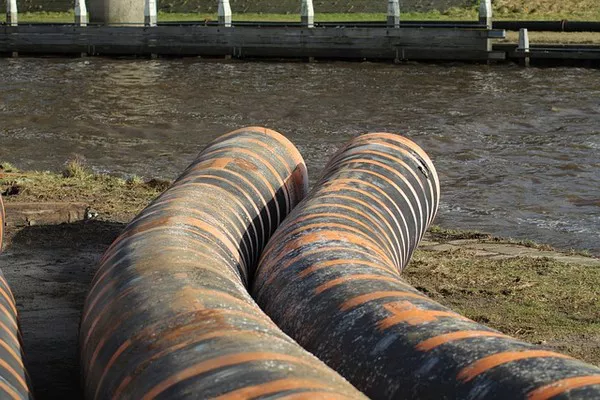Wastewater treatment is a vital process that plays a significant role in preserving our environment and safeguarding public health. As communities grow and industries expand, the generation of wastewater becomes increasingly common. Without proper treatment, wastewater can have dire consequences for the environment, including pollution of water bodies, endangerment of aquatic life, and the spread of waterborne diseases.
In this article, we will delve into the essential steps of wastewater treatment, shedding light on the science and technology behind the process. Understanding these steps is crucial for governments, industries, and individuals who aim to minimize their environmental footprint and promote sustainable water management.
Preliminary Treatment
The journey of wastewater treatment begins with preliminary treatment. During this phase, large debris such as leaves, branches, and other solid objects are removed from the wastewater. These materials can clog pipes, pumps, and other equipment, making it necessary to eliminate them to prevent system damage and blockages.
In addition to removing solid materials, preliminary treatment also helps in reducing the load of organic matter and pollutants that would otherwise pass into subsequent treatment processes. Screens and grit chambers are commonly used to achieve this goal.
Primary Treatment
After preliminary treatment, wastewater undergoes primary treatment. This phase focuses on the removal of suspended and settleable solids, which make up a significant portion of the wastewater’s organic content. Primary treatment typically involves sedimentation in large tanks, allowing gravity to separate solids from the liquid.
During sedimentation, heavier particles settle to the bottom of the tanks, forming a layer of sludge, while lighter particles float to the surface and create a scum layer. The clarified liquid, known as effluent, is then collected and transferred for further treatment, while the accumulated sludge undergoes separate processes for disposal or reuse.
Secondary Treatment
The secondary treatment process is the heart of wastewater treatment and is designed to further reduce the concentration of dissolved and suspended organic matter. The primary aim of this phase is to remove biodegradable substances and harmful pathogens. Secondary treatment employs microorganisms to break down organic pollutants through a biological process.
The most commonly used method for secondary treatment is activated sludge treatment, which involves aerating the wastewater to promote the growth of beneficial microorganisms that consume organic matter. In addition to activated sludge, other biological methods such as trickling filters and sequencing batch reactors are also used, each offering a unique approach to secondary treatment.
Tertiary Treatment
While secondary treatment effectively reduces the majority of organic pollutants and pathogens, some wastewater treatment facilities implement a tertiary treatment step for further purification. Tertiary treatment is particularly important when the treated effluent is discharged into sensitive ecosystems or used for specific applications, such as irrigation or industrial processes.
Tertiary treatment methods include various advanced filtration and chemical processes. These methods may involve the use of sand filters, membrane bioreactors, or the addition of chemicals like chlorine for disinfection. The goal of tertiary treatment is to produce high-quality effluent with minimal remaining contaminants.
Disinfection
Disinfection is a crucial step to ensure that the treated wastewater is safe for discharge into natural water bodies or for reuse in various applications. The primary objective of disinfection is to eliminate any remaining harmful microorganisms, such as bacteria, viruses, and parasites, that may pose health risks to humans and aquatic life.
Chlorination is one of the most common methods of disinfection, where chlorine gas or sodium hypochlorite is added to the effluent to kill pathogens. However, other disinfection methods like ultraviolet (UV) radiation and ozonation are gaining popularity due to their effectiveness and lower environmental impact.
Sludge Management
Sludge management is an integral component of wastewater treatment, and it deals with the disposal and beneficial use of the solids removed during the treatment process. Sludge can be a valuable resource when managed correctly. There are several approaches to sludge management, including:
a. Digestion: Anaerobic digestion is a biological process that breaks down organic matter in sludge, producing biogas (methane) and reducing the volume of sludge.
b. Dewatering: Sludge dewatering processes remove excess water from sludge, reducing its volume and making it easier to handle and transport.
c. Incineration: Some wastewater treatment plants in cinerate the dried sludge to produce energy while reducing the volume of waste.
d. Land Application: Treated sludge can be used as a soil conditioner in agriculture, as it contains valuable nutrients and organic matter.
e. Landfilling: In some cases, sludge may be disposed of in landfills, following proper regulations and safety measures.
Effluent Discharge or Reuse
The final step in the wastewater treatment process involves the disposition of the treated effluent. The choice between discharging the effluent into a natural water body or reusing it for various purposes depends on local regulations and the quality of the treated water.
Effluent discharge into surface waters is subject to strict environmental regulations to ensure that the released water meets specific quality standards. These standards aim to protect the receiving water bodies and aquatic ecosystems from pollution.
Effluent reuse, on the other hand, is becoming increasingly important for sustainable water management. Treated wastewater can be used for irrigation, industrial processes, cooling water, and even potable water supply after further treatment.
Conclusion
Wastewater treatment is a complex and critical process that safeguards the environment and public health by removing pollutants and contaminants from wastewater. The steps involved in wastewater treatment, from preliminary treatment to effluent discharge or reuse, ensure that water resources are protected, and communities can thrive without adverse environmental impacts.
Sustainable wastewater management requires ongoing research and innovation to enhance treatment efficiency and reduce environmental footprints. As the world faces growing water scarcity and environmental challenges, the continued improvement of wastewater treatment processes is essential for the well-being of our planet and future generations.

